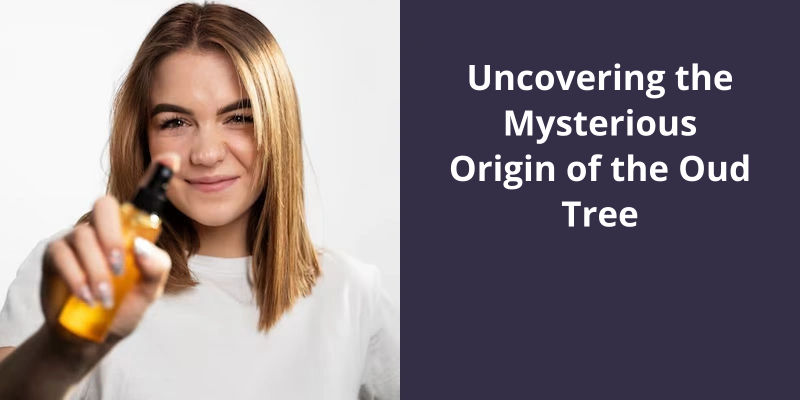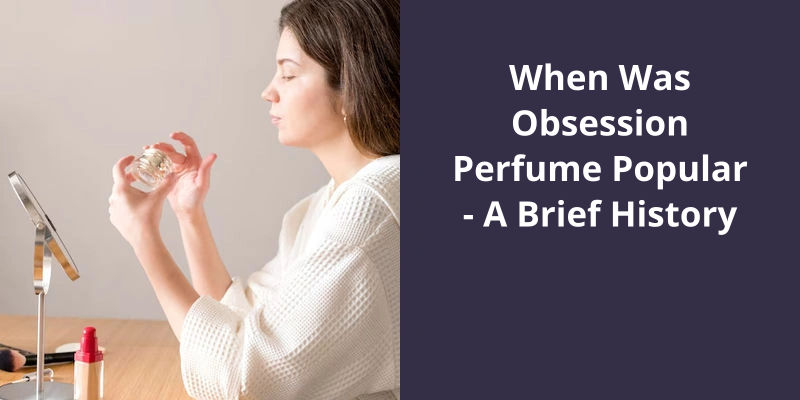The origins of oud can be traced back to the dense forests of Southeast Asia, where the resin is produced by the Aquilaria tree when it’s infected with a certain type of fungus. The tree senses the infection and responds by producing a dark, resinous substance that’s highly prized for it’s rich, woody aroma. Oud is primarily sourced from countries such as Thailand, Laos, Burma, Vietnam, and India, where it’s been an important cultural and economic commodity for centuries.

Is Oud Wood Arabic?
However, the term oud itself is derived from the Arabic word, oudh, which means wood. So, while oud isn’t exclusively Arabic, it’s history and cultural significance in the Arab world have made it a staple in Arabic perfume making.
This complexity is due to the fact that oud is created when the Aquilaria tree is infected with a type of mold, which causes the tree to produce a resinous substance known as agarwood.
The production of agarwood is a complex and time-consuming process, which involves carefully monitoring and nurturing the infected trees. As a result, oud is considered one of the most expensive and valuable ingredients in perfumery, with prices ranging from a few hundred dollars to several thousand dollars per kilogram.
Despite the rising demand for oud, concerns have been raised about the sustainability of it’s production, as over-harvesting and illegal logging have decimated the wild Aquilaria tree populations. As a result, efforts are being made to promote sustainable cultivation practices and protect this precious resource for future generations.
It’s unique aroma and high value have made it a sought-after ingredient in the Western world, but we must take care to ensure it’s sustainable production for generations to come.
The History and Cultural Significance of Oud in the Arab World
The oud is a musical instrument that’s been played in the Arab world for centuries. It’s unique sound is a symbol of Middle Eastern culture and has been an important part of the region’s music for generations. The oud has a deep cultural significance in the Arab world and is often featured in celebrations and religious ceremonies. It’s history is intertwined with the history of the region, and it’s influence can be heard in countless musical genres that originated in the Middle East.
But why do Arabs use oud beyond it’s religious significance? The answer lies in the aromatic properties of this precious wood. Oud has a rich, complex scent profile that’s highly prized in the Middle East and beyond. In the following sections, we will explore the cultural and historical significance of oud, as well as it’s modern-day uses and popularity.
Why Do Arabs Use Oud?
The use of oud in Arab culture dates back to ancient civilizations, where it was highly prized for it’s medicinal properties and distinct fragrance. The resin of the Aquilaria tree, from which oud is derived, is known for it’s calming effect on the mind and body, making it an ideal ingredient for spiritual practices. It’s been said that the Prophet Muhammad himself used oud when communicating with the divine.
Apart from it’s religious significance, oud has also become a symbol of luxury and sophistication in Arab society. The rare and exotic nature of the Aquilaria tree, which only produces oud under specific environmental conditions, makes it a highly prized commodity. A single kilogram of oud can cost thousands of dollars, making it a status symbol for those who can afford it.
Traditional Arab medicine has long recognized the healing power of oud, using it to treat a variety of ailments, from headaches and respiratory problems to skin infections and digestive issues. Modern scientific studies have confirmed the analgesic, anti-inflammatory, and antioxidant effects of oud, making it a valuable ingredient in contemporary medicine.
The production of oud is a complex and time-consuming process, involving the extraction of resin from the Aquilaria tree and the subsequent distillation of the oil. The scarcity of the Aquilaria tree, coupled with the high demand for oud, has resulted in overharvesting and illegal logging in some areas, leading to environmental degradation and threats to the survival of the species. As such, there have been efforts to promote sustainable oud production and trade, to ensure it’s continued availability for generations to come.
It symbolizes the connection between man and the divine, as well as the ingenuity and innovation of Arab perfumery and medicine.
The Cultural Significance of Oud in Other Regions Outside of the Arab World
The oud is a stringed musical instrument popular in regions outside the Arab world as well, owing to it’s cultural significance.
Today, oud has gained popularity all over the world and is used by a diverse range of cultures. It’s distinct and captivating aroma has made it a favorite among musicians, perfumers, and incense makers. In this article, we will dive deeper into the world of oud and explore it’s various uses and cultural significance.
What Cultures Use Oud?
However, ouds popularity and production have spread to other cultures over the years. In Egypt, for example, oud has become a quintessential part of the countrys cultural heritage, and it features prominently in traditional music and fashion. Egyptians use the fragrance of oud to mark special occasions like weddings and religious festivals, and they believe it brings good luck and happiness.
Arabian culture also values oud greatly. To Arabians, it symbolizes cultural heritage, luxury, and prosperity. Oud fragrances play a significant role in several Middle Eastern states economies. Families pass down oud perfume-making skills, and creating it’s evolved and adapted with the changing of the times.
In Iran, oud is known as “Ood,” and it’s a history intertwined with the Persian Empire. Iranian oud song performers typically sing older, classical Iranian pieces about life, love, and loss. The instrument became a symbol of Iranian heritage to Persian people, and it’s now an important tool in teaching children music and poetry.
In Turkey, which is credited with developing the art of oud-making, oud has had a long and complex history intertwined with Sufi culture. Sufis use oud music in their ceremonies, and listening to it’s music is believed to be a spiritual experience transcending time and space.
In India, oud plays an important cultural role in the Hindu religion, and is associated with holy and auspicious occasions. It’s a long-standing connection with Indian classical music, where it serves as of the most significant genres of music. Indian oud musicians follow musical traditions passed down from generations.
The Different Types of Oud and Their Unique Qualities
- Indian oud: Has a warm, rich, and woody scent with notes of honey and spices.
- Cambodian oud: Known for it’s earthy aroma with hints of floral and fruity tones.
- Malaysian oud: Has a strong, sharp, and slightly medicinal fragrance with notes of smoke and leather.
- Australian oud: Has a complex fragrance profile with hints of eucalyptus, citrus, and camphor.
- Thai oud: Has a sweet and spicy aroma with notes of cinnamon, cloves, and nutmeg.
- Laos oud: Has a distinctive smoky aroma with hints of dark chocolate and tobacco.
Source: The history and meaning of oud in the Middle East
The popularity of oud has created some challenges in terms of quality control and sourcing. While India is widely recognized for providing the highest quality oud, other countries such as Cambodia and Vietnam are also emerging as key players in the industry. As the demand for oud continues to increase, it’s important to ensure that the quality of the product remains consistent and that sustainable sourcing practices are put in place.
Which Country Is Famous for Oud?
There are many countries that are known for producing Oud, but India is undoubtedly the most popular one. The level of craftsmanship and attention to detail that goes into making high-quality Oud alongside the country’s rich heritage of incense production makes India a favorite among market enthusiasts. Indian oud is particularly sought after for it’s rich, earthy, and woody aroma, which is long-lasting compared to other varieties.
People have been using Oud wood for centuries for various reasons, including aromatherapy, medicinal, and religious purposes. It’s capacity to act as a natural pesticide, as well as it’s ability to ward off evil spirits and purify the air, have been some of it’s common uses over time. In todays world, the fragrance has become a reflection of personal style and preference, with many celebrities endorsing different oud varieties.
Cambodia and Vietnam, particularly in the Mekong Delta region, are other countries famous for producing high-quality Oud. While Vietnamese oud is known for it’s sweet, aromatic smell and fruit undertones, Cambodian oud has a more spicy and medicinal scent. Both are equally well-recognized and preferred in the market, fetching very high prices as a result of their rarity and quality.
The oud has a rich history and cultural significance in several countries, making it difficult to pinpoint it’s exact origin. While the Arabic word for oud suggests it could have originated in the Arab world, there are also strong connections to Turkish music and culture. In this article, we will explore the fascinating history of the oud and it’s place in both Arabic and Turkish music.
Is Oud Arabic or Turkish?
It’s commonly used as a generic name for a family of stringed instruments used in North African and Middle Eastern music. The traditional oud has a deep, pear-shaped body and a short neck with no frets, and it’s played with a plectrum.
The exact origins of the oud are unclear, although it’s believed to have originated in Mesopotamia around 3000 BCE. It spread throughout the Islamic world and became a popular instrument in the Arab world by the 7th century. The oud also played a significant role in Turkish music, where it’s known as the ud or ut.
While there are similarities between the Arab and Turkish versions of the oud, there are also some distinct differences in terms of shape, sound, and playing technique. The Turkish version of the oud has a slightly shorter neck and a shallower body, resulting in a brighter and more percussive sound.
From the intricate melodies of Arab classical music to the lively rhythms of Turkish folk music, the oud continues to play a vital role in the rich musical heritage of the region.
As the popularity of oud increases, it’s becoming a sought-after ingredient in not just traditional Middle Eastern perfumery, but also in fragrances developed for Western markets. With it’s complex and intriguing scent, oud is appealing to a wide range of customers, from those seeking spiritual enlightenment to those simply seeking a unique olfactory experience. Let’s take a closer look at the growing trend of oud-based perfumes and who’s using them.
Who Uses Oud?
Oud, also known as agarwood, has been used for centuries and is known for it’s unique woody fragrance. One of the primary groups to use oud is the Muslim population, who believe it’s spiritual and medicinal properties. It’s often used in religious ceremonies, and oud-based perfumes are popular for daily use by many Muslims.
It’s distinct aroma evokes luxury and opulence, and it’s use has become a signifier of wealth and status. Many high-end fashion brands have even created their own oud fragrances, catering to the growing demand for this rare ingredient.
Buddhism is another religion that uses oud, primarily during meditation. The scent is said to aid in relaxation, focus and concentration. In addition, many other spiritual communities around the world use oud for similar purposes.
The Different Forms of Oud Products, Such as Incense, Oil, and Wood Chips, and Their Uses in Different Applications
- Oud incense is used for aroma therapy and is known to have relaxing and calming effects.
- Oud oil is mainly used in perfumes and cosmetics due to their unique and exotic fragrance.
- Oud wood chips are burned to release their aromatic fragrance and are widely used in many cultural and religious practices.
Conclusion
The process of acquiring this rare wood is a delicate and challenging process that requires careful attention and patience. Despite it’s origins, it’s become an emblem of luxury and sophistication in several cultures, particularly in the Middle East, where it’s use dates back thousands of years. It’s complex and alluring aroma is unmistakable, and it’s become an essential element in the creation of many of today's most coveted fragrances. In conclusion, the history and origin of oud are deeply rooted in cultural traditions and practices, and it’s mystique and allure will continue to captivate and inspire for generations to come.





